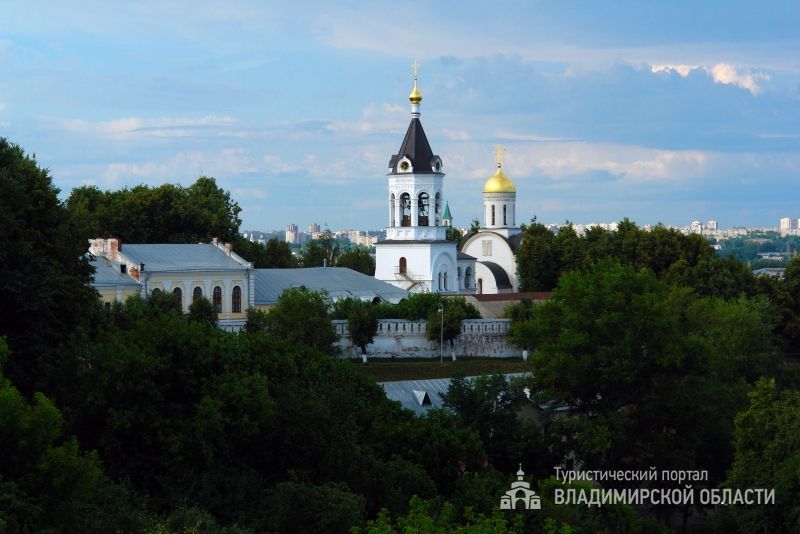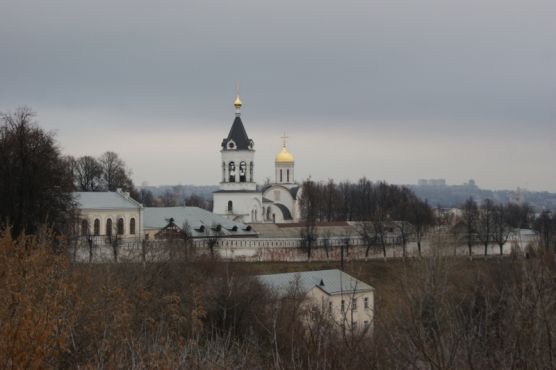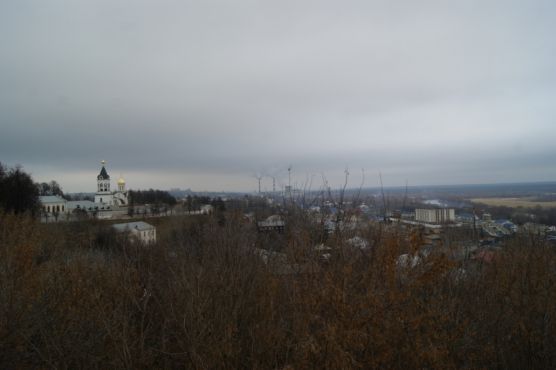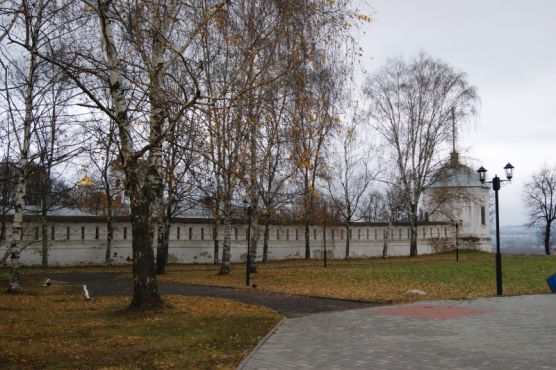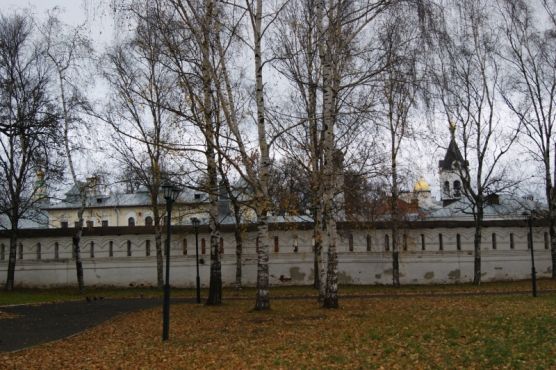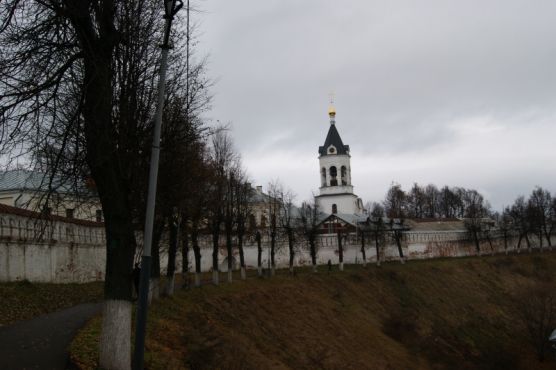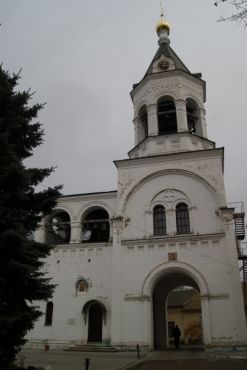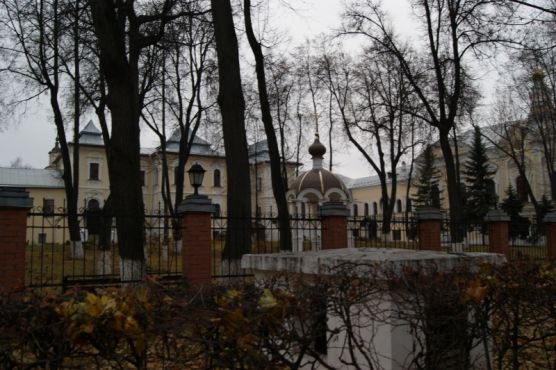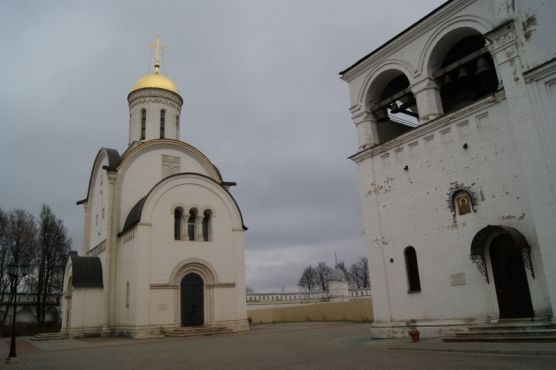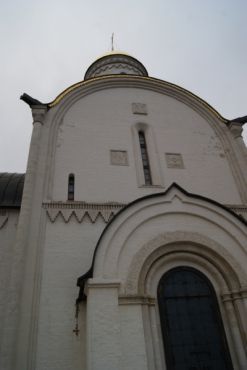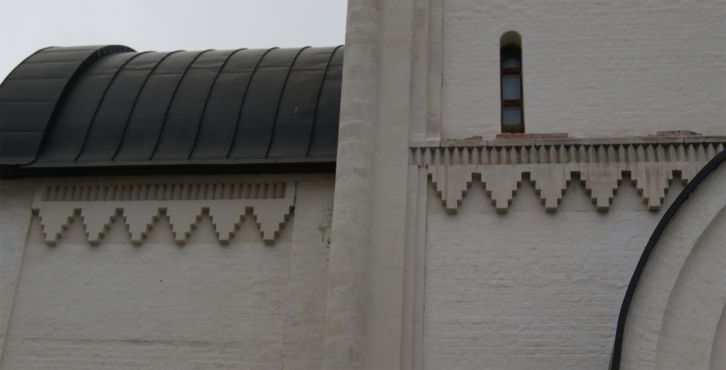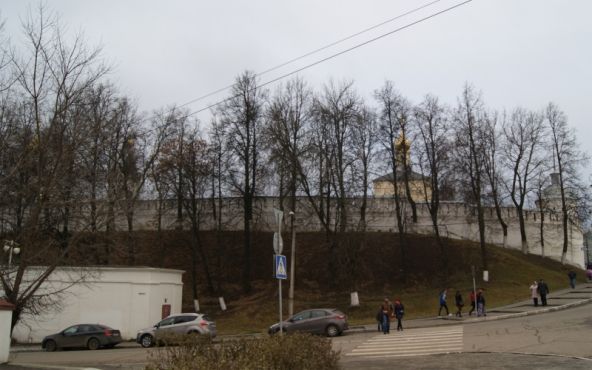Nativity of the Virgin Monastery (The Vladimir Kremlin)
- Address:
- Vladimir, Bolshaya Moskovskaya (Big Moscow) Street, 68
- GPS:
- 56.13111256, 40.41307458
- Phones:
- +7 (4922) 32-67-10
The Nativity of the Virgin monastery is located on a high hill above the Klyazma, as if completing the ensemble of ancient white-stone churches of Vladimir. The founders of the monastery are the great Vladimir Prince Vsevolod III the Big Nest and Archbishop John. Here, until the middle of the 19th century, there was a white-stone Nativity Cathedral, built in 1192-1195, almost at the same time as the Cathedral of St. Demetrius, but very distorted by alterations. Initially, it outwardly resembled a princely temple, yielding to it, however, in the abundance of carved decoration. Instead of the columnar belt it had a geometrically simple frieze of dentate triangles ran around. The stone carving was used only for the decoration of portals and capitals.
Until the beginning of the 14th century, the temple was considered a cathedral of Russian metropolitans. In 1263, an outstanding statesman and commander, hero of the Battle on the Ice (April 5, 1242), Prince Alexander Yaroslavich Nevsky, grandson of Vsevolod the Big Nest was buried under the roof of the Nativity Cathedral. His relics for more than four and a half centuries rested in the monastery cathedral, attracting noble and rich patrons and donors. The manuscript "The Life of Alexander Nevsky" was created in the monastery and many other manuscripts were kept there. In particular, until the beginning of the 18th century, the Laurentian Chronicle, one of the oldest in Russia, was written and kept here.
The Nativity monastery was considered senior in Russia for a long time. Only in 1561 it conceded its primacy to the Trinity-Sergius Lavra, and later – the Alexander Nevsky Lavra, where in 1723, according to the decision of Peter I, the relics of Alexander Nevsky were transferred. Since that time the Nativity Monastery in Vladimir has become the third most important in Russia. After the transfer of the relics, the place of their stay in the Nativity Cathedral continued to be revered. It was allocated with an iron grating and a canvas with the painted on the green atlas image of the holy prince. In addition, the relic remained in the monastery – a memorial reliquary in the form of a simple wooden box, in the cover of which was built in a particle of Alexander Nevsky’s relics. Since 1923, it is carefully preserved in the Assumption Cathedral.
Until the end of the 16th century, the Nativity Cathedral remained the only stone building in the monastery, before the gate church was built in the name of Alexander Nevsky. Gradually, the monastery complex grew with new buildings. At the beginning of the 17th century, in the same line with the Holy Gates, a tented refectory church was built (the Trinity church, later renamed the Church of the Nativity of Christ, which now overlooks to the Big Moskow Street). In the middle of the 17th century, a tented bell-tower with a striking clock was built, as well as stone residential cell buildings. By the end of the century there appeared the administrative, northern and southern housings of fraternal and hospital cells, and then – the eastern archimandrite corps.
In 1744 by the decree of Elizaveta Petrovna the Vladimir diocese was established. The Nativity monastery was abolished, becoming the residence of the bishop. It is then that the Bishops' house was built – elegant, baroque, with three high roofs-"caps", with two front staircases at the entrances.
And what happened to the ancient Nativity Cathedral? It lived until the middle of the 19th century very dilapidated, which Alexander II saw when he was passing through Vladimir. The Emperor ordered to restore the church in its original form and donated 40 thousand rubles. As a result, a new building (reconstruction) appeared, reproducing the image of the ancient cathedral. But its age was short-lived.
In 1918 the monastic life ended – more than for 70 years. The entire monastic complex came at the disposal of Province Emergency Commission: locks were hung on the doors of the churches, crosses were replaced with red flags, and in the former refectory there was a dance hall. In July 1930, the Nativity Cathedral, which "obscured the light and sun in the apartments of employees" of the USPA (United State Political Administration – USPA) and disturbed training shooting, was dismantled together with the foundation. The same fate befell the bell-tower of the 17th century. In the 1930s and 1970s, the territory and all buildings of the former monastery belonged to the USPA, the People's Commissariat of Internal Affairs (NKVD – Russian) and the Committee of State Security (KGB – Russian).
In 1992, the monastery and the residence of the bishop were resumed in the old place. On October 30, 1993, on the day of commemoration of the victims of political repressions, a commemorative white-stone cross was opened in the garden of the Nativity Monastery, and on the monastery wall was a memorial plaque commemorating those executed in the monastery in the 1930s and 1940s.
Restoration of the Nativity Cathedral was preceded by archaeological excavations in 1997-1999, during which a large number of details of the cathedral of the 12th century were found, the foundation was completely opened and measured. In 2004, the construction of a new beautiful and unusual temple was completed, which reproduces some of the details of the original cathedral (the carved perspective portal, the belt of dentate triangles). In 2006, a bell-tower with the belfry and the church of Alexander Nevsky were built near the cathedral. These new buildings, without repeating the old ones, return to the ensemble of the Nativity Monastery its outstanding role in the city panorama. Not casually, many inhabitants of Vladimir have got used to name this magnificent construction on the high bank of the Klyazma "the Vladimir Kremlin".
 Tourism portal of the
Tourism portal of the